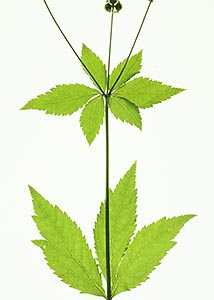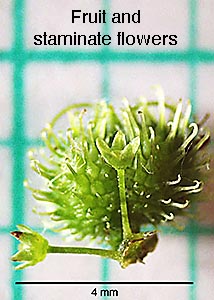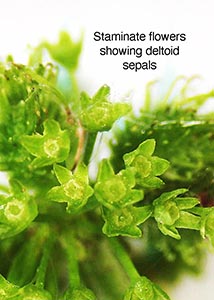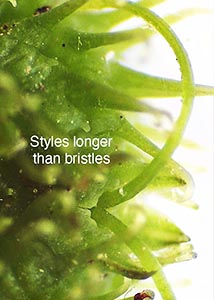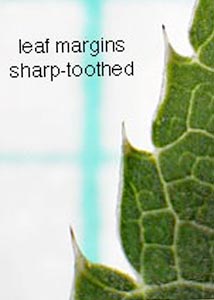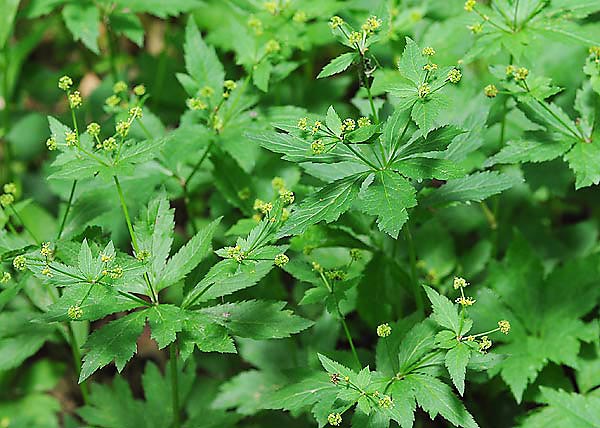
Date: June 4, 2011. Location: Amana Woods (map)
| Classification Hierarchy | |
| Kingdom | Plantae |
| Subkingdom | Tracheophyta |
| Superdivision | Spermatophyta |
| Division | Magnoliophyta |
| Class | Magnoliopsida |
| Subclass | Rosidae |
| Order | Apiales |
| Family | Apiaceae |
| Genus | Sanicula |
| Species | Sanicula odorata |

Date: June 4, 2011. Location: Amana Woods (map)
Scientific Name:
Sanicula odorata (syn. Sanicula gregaria) (Saniclua is said to be from sanare [L] to heal)
Common Name: Clustered Black snakeroot, Common Black snakeroot
Origin: Native
Notes: Eilers and Roosa indicates four species of Sanicula in Iowa: S. marilandica, S. odorata (gregaria), S.trifoliata, and S. canadensis. Of these, the first two are distinguished by the long curved styles that show above the hooked bristles on the fruit—in the second two the styles are hidden among the bistles. One difference between the two long styled species is the shape of the staminate sepals. Thin triangular (subulate) for S. marilandica and deltoid (a chubby triangle) for S. odorata (which is very common in Iowa). See this paper by Pryer and Phillippe to compare staminate sepals.
Additional references: 1, 2, 3, 4, 5, 6, 9,10.
Flowers: June, greenish-yellow; inflorescence, irregular compound with polygamous heads; fruit, schizocarp, styles conspicuous among hooked prickles in the maturing fruit, ovules and fruit on short stalks (stipitate).
Leaves: usually 3 parted—deeply cleft lateral leaflets may cause the leaf to appear 5 parted, margins are sharply toothed.
Glossaries of Botanical Terms and Pronunciations: 1, 2, 3, 4, 5.
